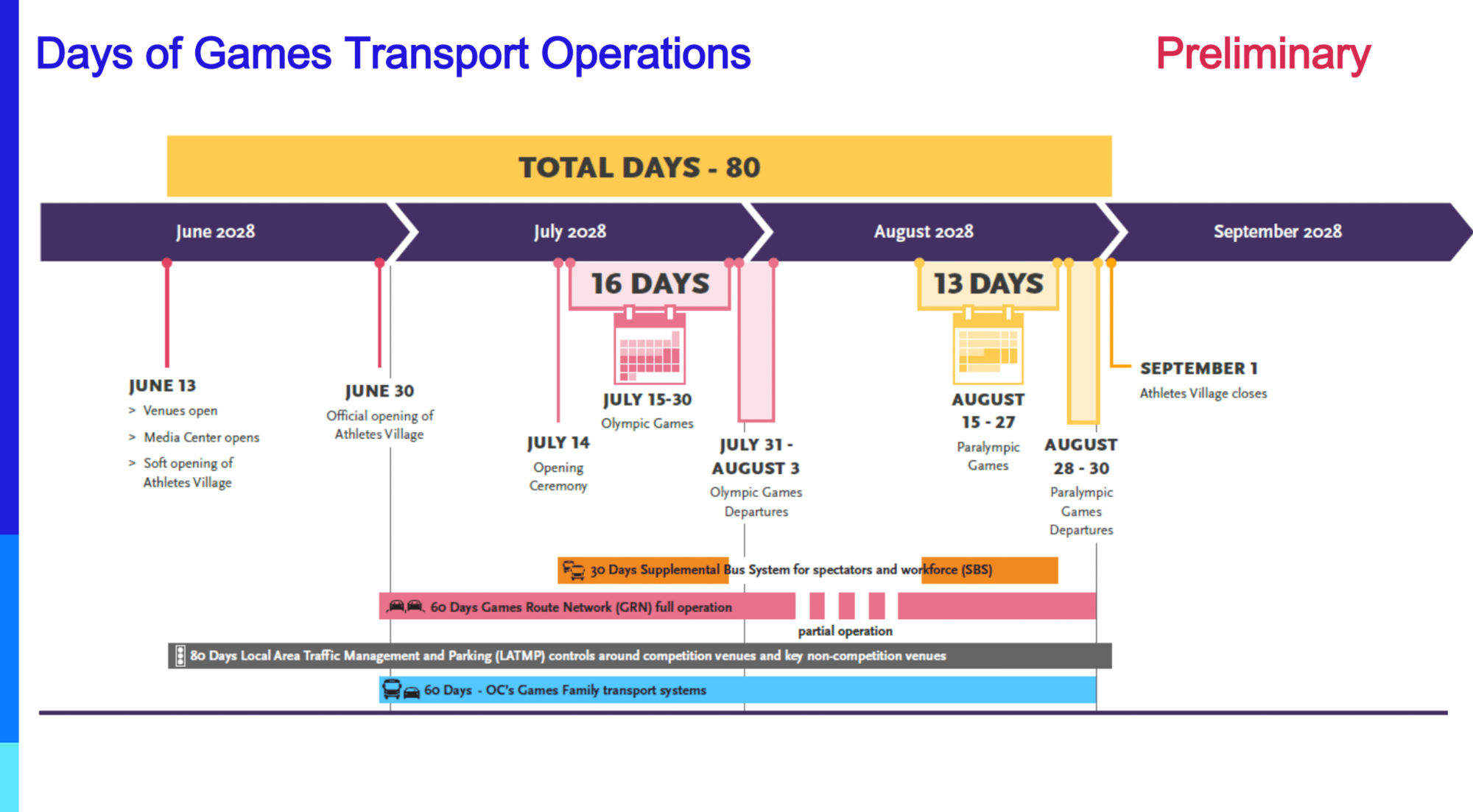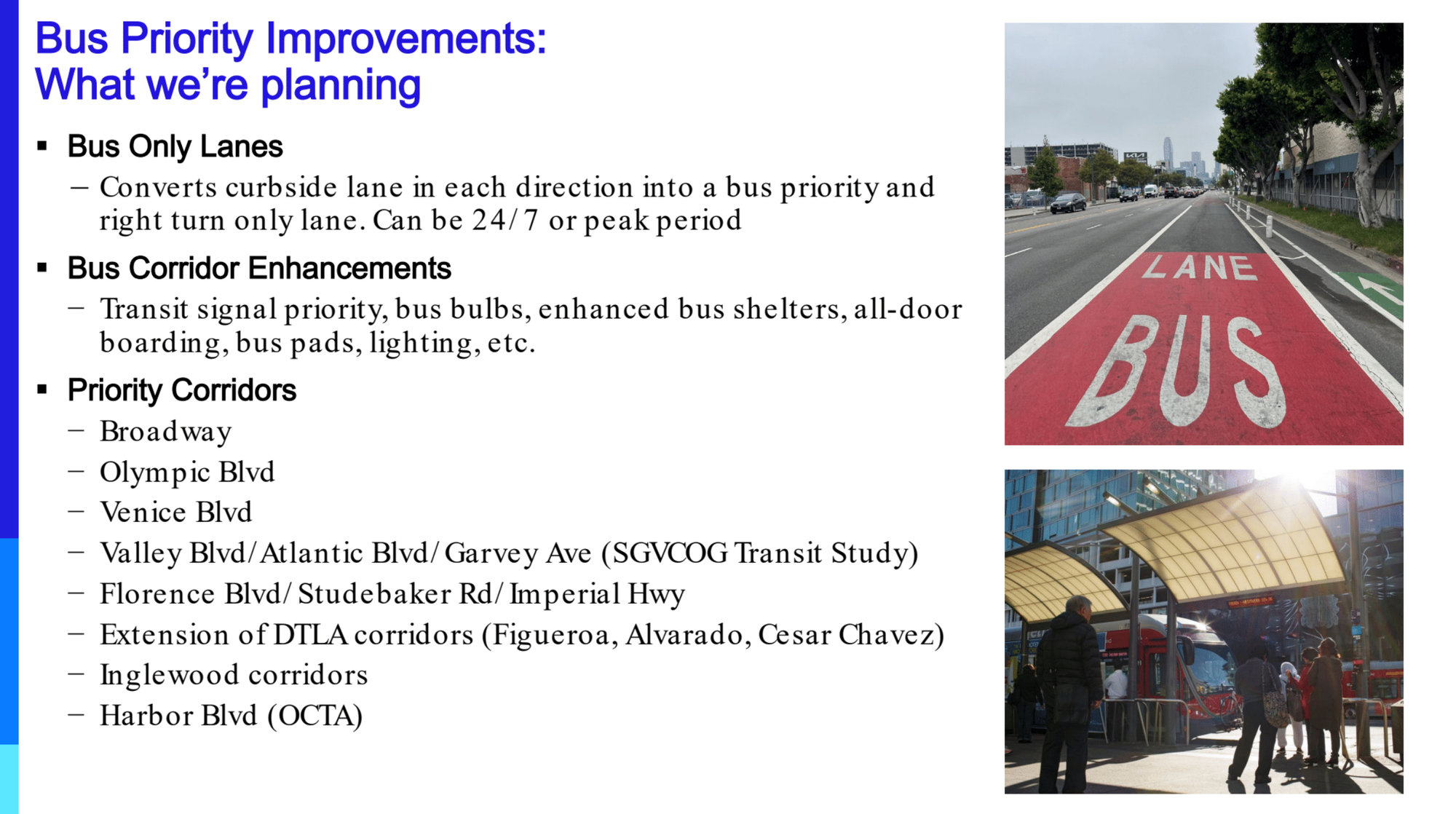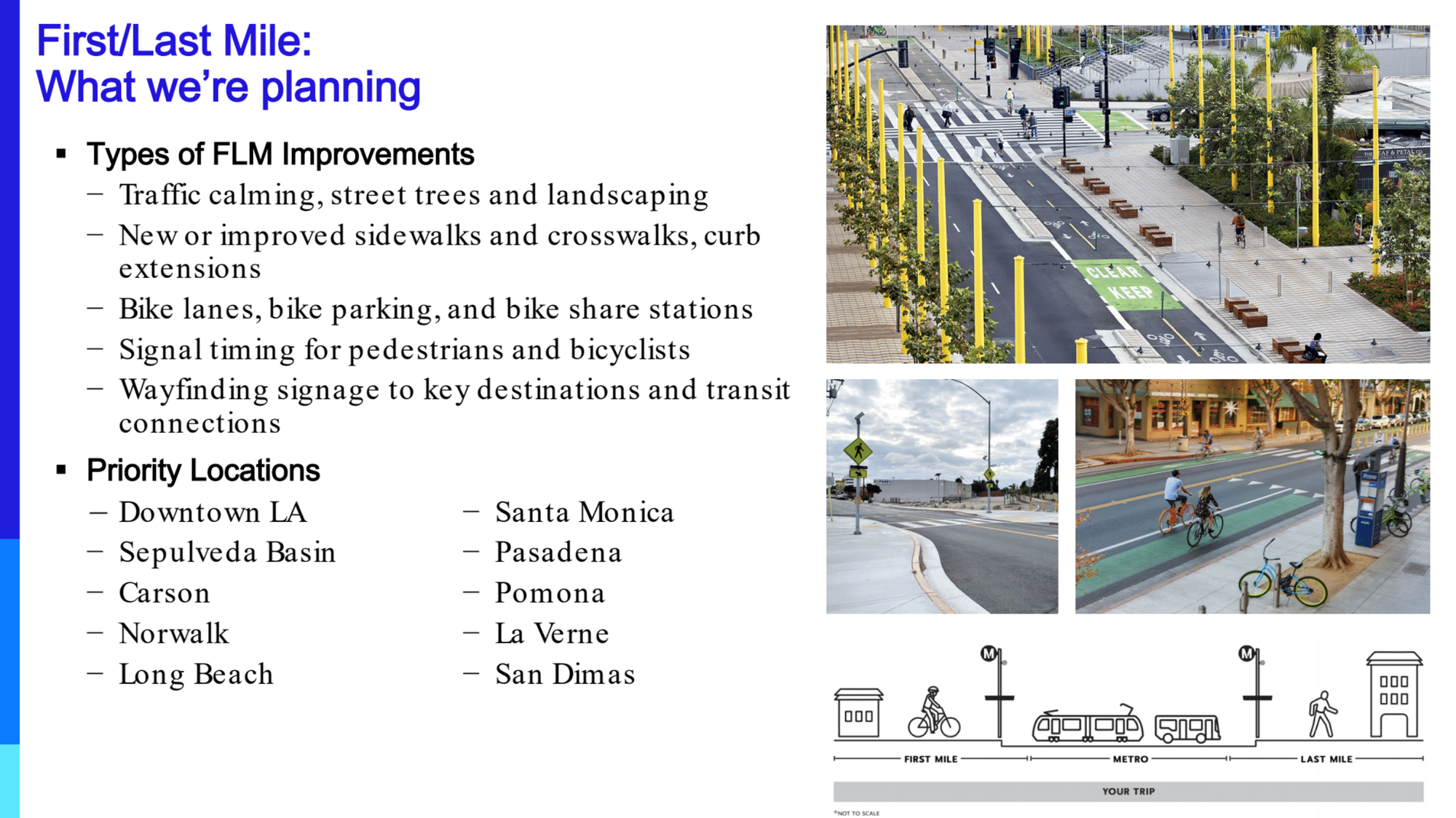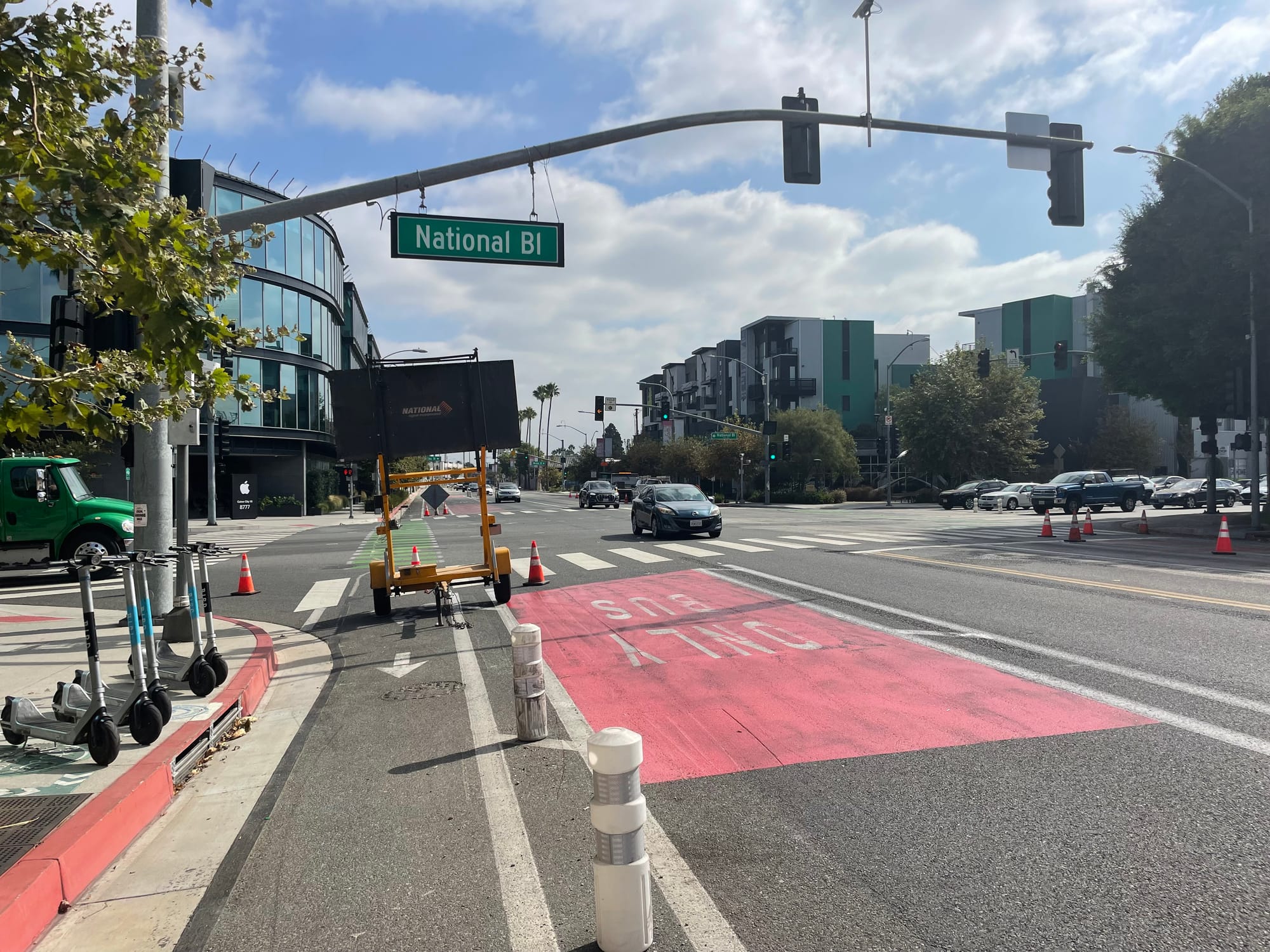The Grand scheme
This is the downtown that Frank Gehry wanted. When will LA's leaders give it to us?
It's time for paint, posts, and political will

Last Thursday, I moderated a lively breakfast panel for the Westside Urban Forum in Culver City. The event was held, quite fittingly, at the former Helms Bakery, the official bread sponsor of the 1932 games, which branded itself as the "Choice of Olympic Champions" way, way before Wheaties. As I've written before, traveling from the city of LA to other LA County cities can sometimes feel like traveling to a different country. When the E (Expo) line deposited me at the Culver City station (right after yet another earthquake), I was greeted by a spotless pedestrian plaza, comfortable-to-cross crosswalks, spacious bus shelters, and wide leafy sidewalks. There was even wayfinding signage! I arrived at the venue after a short and truly pleasant stroll. It was all so very easy.
We were gathered that morning in an attempt to answer this question: "How can the Olympics improve quality of life in Los Angeles?" And as I posed that question to the panelists, the answer from many of them, perhaps unsurprisingly, was about improving the way we move around the city. Agency Artifact's Chris Torres talked about the Festival Trail concept. And Ed Mendoza, policy director for the Livable Communities Initiative, presented his vision for a city that treats its sidewalks, parks, and trains like a home: "They vacuum daily, they clean the dishes and tidy up, even after long days. Maybe they even buy flowers to bring some life into the space." And not just because company's coming over.
During the Q&A I was pleased to look out in the audience and see the raised hand of Jody Litvak. As an executive officer of community relations, Litvak is a Metro subway-building legend who tenaciously navigated lawsuit after lawsuit as Beverly Hills obstructionists attempted to stop the "Purple Threat" from tunneling beneath the city. In a testament to her leadership, you will soon be able to take a 30-minute trip from downtown to Westwood — with a stop in Beverly Hills, thank you very much.
So let's just say Litvak knows a few things about getting the big stuff done. And what she had to say about Olympics planning that morning started with the big stuff.
"If it hasn't broken ground by now," she said, "it's not happening."
Now you know I always like to hear real talk from local officials. But this message, I think, is especially critical for everyone to hear right now. Time is really running out. LA cannot continue to count on Metro's megaprojects alone to manage our way to a "car-free" games. The pricey marquee investments like the D line to Westwood? Important! But as I wrote in April, they're still only going to get us part of the way there.
"Cities 'own' the streets and sidewalks," Litvak reminded the crowd. And it's going to be up to those cities, she said, making those improvements to streets and sidewalks, to ensure riders can easily get to that brand-new subway station. Or to the stadium. Or back home.
And this doesn't just apply to the games.
To illustrate this point, here's Metro's latest presentation on their 2028 plans — thanks to @numble; follow @numble! — including something I hadn't seen before that suddenly makes it all feel extremely oh-shit real: a preliminary schedule I like to call (80) Days of Summer.

This new presentation has a lot of information about operations during the games, some of which we've seen before. (One notable detail: a commitment to use "zero and near-zero emission" buses plus a contingency fleet of borrowed or retired compressed natural gas buses; more on that another time.) But what caught my eye is the updated section on the legacy improvements that need to be made at specific LA-area locations to help transportation function better both during and after the games. There's now a list of proposed bus priority corridors where streets that are moving a lot of people need bus-only lanes and better bus shelters. There's also a list of proposed first-last mile improvements where areas around stations need new sidewalks, bike lanes, and more trees.
These improvements are cheerily labeled by Metro as "what we're planning." But guess how much jurisdiction Metro has to implement these things? Exactly zero.


In other words — and these are my words, not Litvak's — Metro's planning work is pretty much finished, and now city leaders really need to start picking up the slack. Ideally this would have meant LA leading the charge in building wider sidewalks, more tree wells, protected bike lanes, and dedicated bus corridors when we were awarded the games seven years ago. Now we need a plan to do all those small things fast. Luckily, some of these changes can be made with paint and posts — they don't necessarily require 10 years and a giant check signed by Secretary Pete.
But in order to do this, both for the Olympics and for anyone who wants to get to work on time tomorrow, we're going to need a lot more of something that's currently in short supply throughout the LA region: political will.
As if to underline the gravity of the situation, we all stepped outside after the panel to see the best new bike and bus lane improvements in all of LA County literally being torn out due to political cowardice.

Part of what had made my hop over to Helms Bakery so lovely was Move Culver City, a small but mighty street improvement project that took a tiny bit of space away from cars to make it safer and easier for people to walk, ride bikes, and take buses. Some other LA-area cities, like Long Beach and Santa Monica, have already been taking this type of permanent infrastructure very seriously, of course. But the speed at which Culver City got such transformative changes in the ground had made this project the countywide model for all the other cities needing to catch up. And it worked! During the pilot period, bus ridership increased 38 percent and biking increased by 57 percent.
Sure, the city of LA has a handful of new bike lanes, some of which have gone in relatively fast. More bus lanes are coming along. Ken Bernstein, principal city planner for LA's planning department, was on the Westside Urban Forum panel that morning, and he confirmed that the city is thinking about legacy opportunities, specifically those first-last mile improvements. I think we can probably get some shade trees planted. I'm still holding out for major sidewalk fixes. AFTER ALL WE HAVE A LEGAL OBLIGATION. But the truth is that we're almost too late for the small stuff, too. We're 47 months out and LA, the official host of the games, still has no strategy for our streets and sidewalks. We don't even have a document like Metro's that says "what we're planning."
Culver City drew us a template. It's time for paint, posts, and political will. And hopefully more permanent changes; maybe we can borrow Santa Monica's 3D curb printer? Because frankly, it was terrifying to stand there on the corner and watch the best example we have for moving the region forward being thrown so hastily in reverse. 🔥